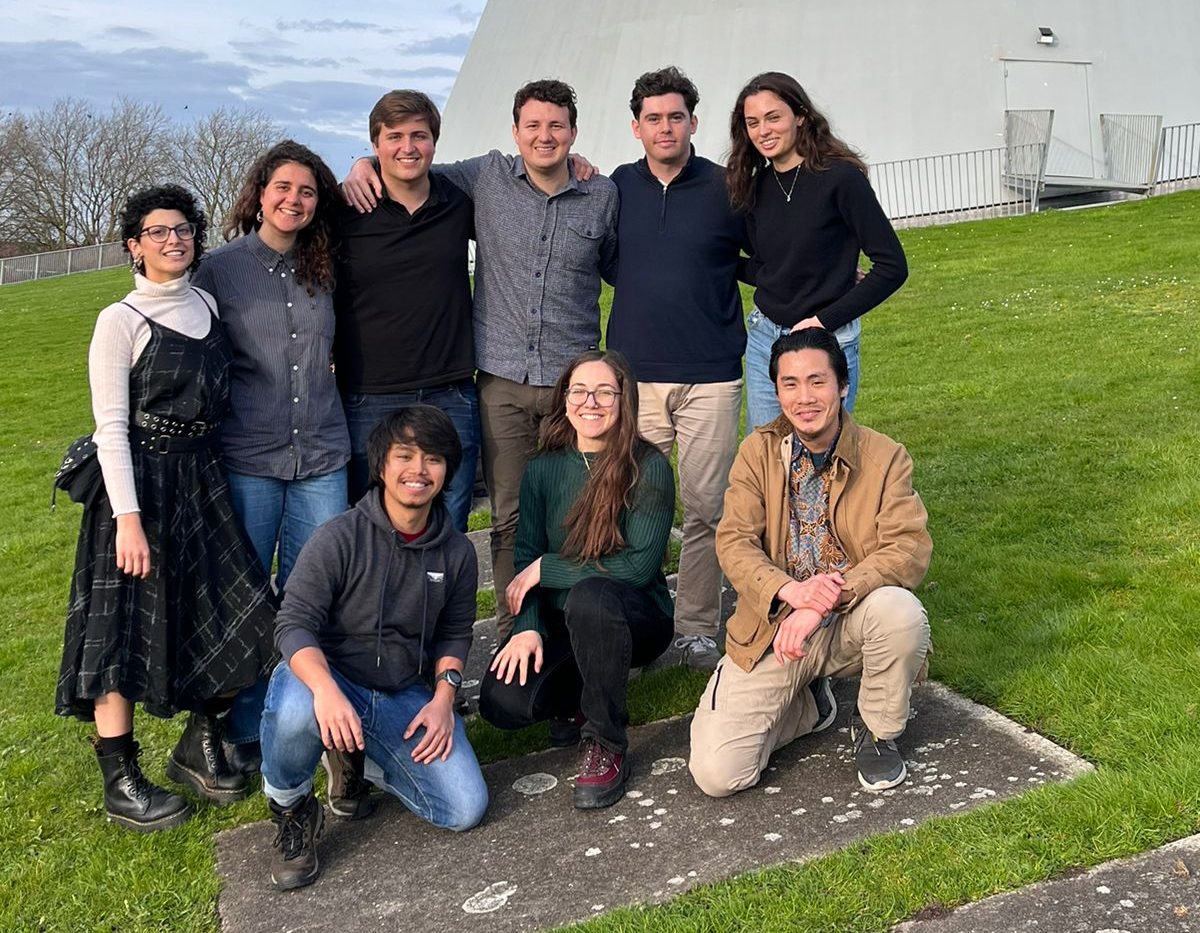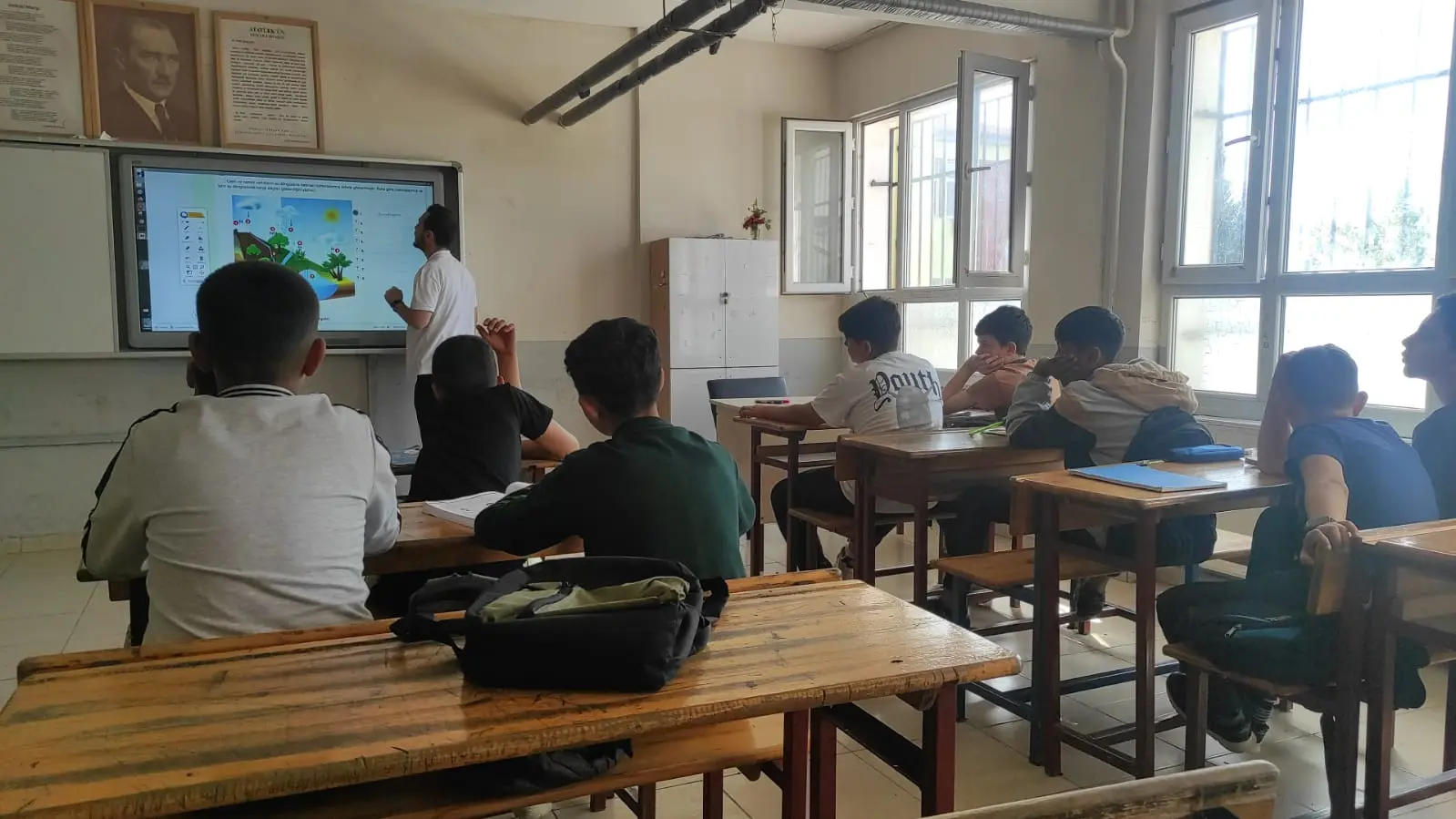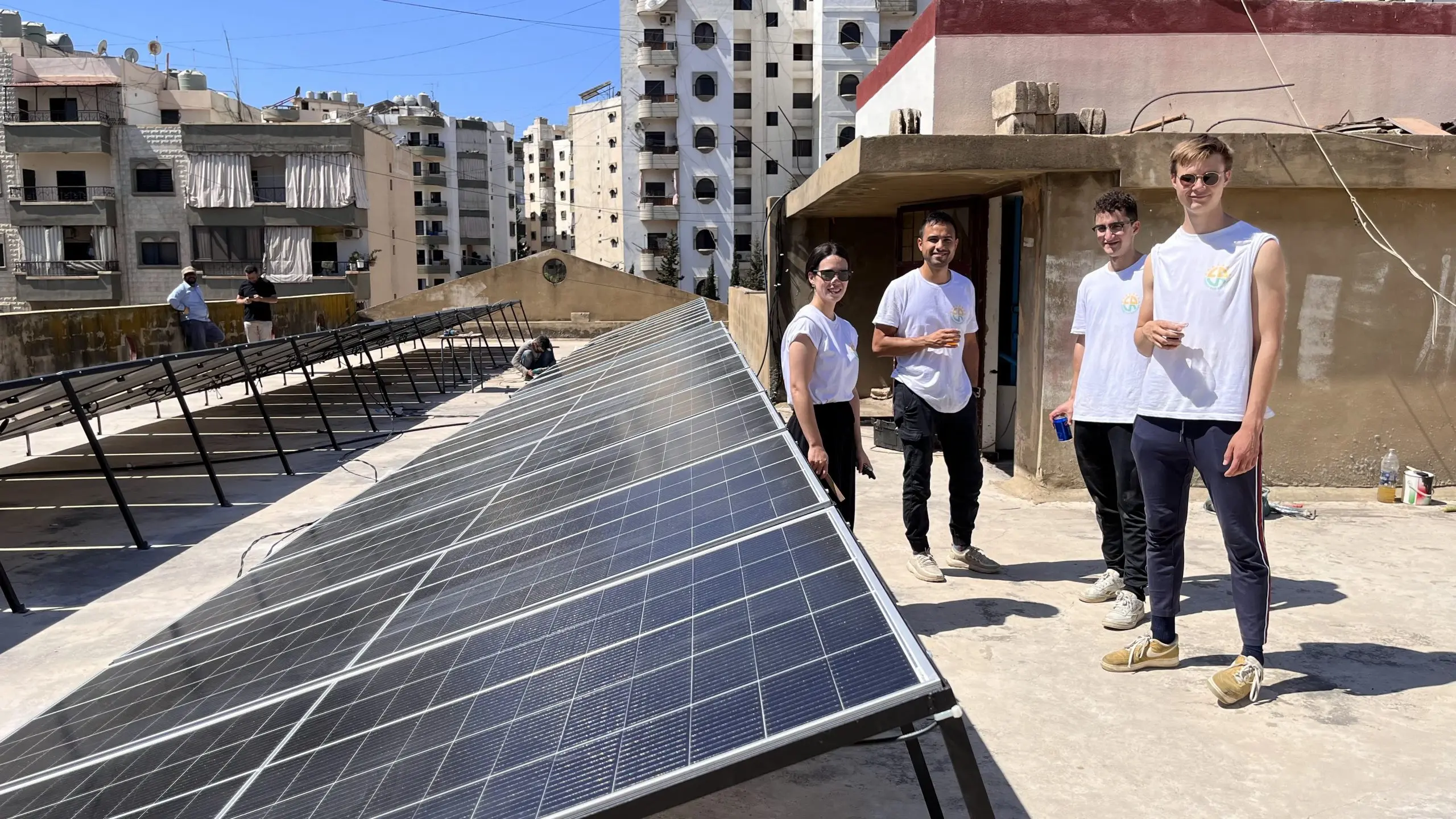The Energy for Refugees student team will go to the earthquake prone zone in Turkey in the next academic year to supply a primary school with 1,500 pupils with a reliable source of energy.
Energy for Refugees' previous team installed a solar panel system at a school in Tripoli last summer. (Photo: Energy for Refugees)
The Bohsin-Imam-Hatip school in Antakya was spared last year during the earthquakes on the Turkish Syrian border. One school in the area was less lucky and was totally destroyed. Since then, both schools have shared one building. The number of pupils almost doubled, from 800 to 1,500. To ease the pressure of the numbers, the school has a morning and an afternoon shift.
But the unpredictable power is a big problem. Smartboards, computers, lights and refrigerators in summer are not always available. This interferes with teaching, says architect Ezgi Nalci who works for an NGO in the region. She had previously been involved in TU Delft through the Extreme Architecture master’s subject in which students visited Antakya. Now she is approaching the TU Delft Energy for Refugees student team for help.

She came to the right place. Since its founding in 2017, the team runs a project every year to supply refugees with electricity in emergency situations. Teams have gone to several places, including Lesbos, and during the lockdown helped a refugee camp in Guadalajara, Mexico remotely. Last year, the students helped a school for the first time in Tripoli, Lebanon.
SET student Stella Theodoraki is one of the two people responsible for the team’s communications and events. She comes from Greece and sees that it has become harder over the last few years to do projects at refugee camps. But for the team, it was primarily an ethical decision this year not to do a project at a Greek refugee camp. “Unlike a couple of years ago, they are now prisoners behind fences.”
Safety in the region
This is why the choice again fell on a school this year, now in the earthquake hit area of Turkey. The Netherlands has a negative travel advisory for this region because it is close to the border with war-torn Syria. The students hesitated about whether to go to the location for the project’s construction work.
But they also understood that unsafe areas are sometimes unavoidable, says TPM student and team member Margherita Andorno. “We are Energy for Refugees after all.” Apart from that, they could not work through video calling as this would not guarantee that the parts are built and connected properly. “We concluded that if we do a project, we go there.”
This was why Gaza was taken off the list. “If even the NGOs that bring food there are bombed, it would be too dangerous for us,” says Theodoraki. That said, Energy for Refugees is still in contact with BK Scholars for Palestine since the latter’s event was cancelled to organise something jointly.

Funding
At the beginning of the next academic year, the team will travel to Turkey to install a renewable energy system at the Bohsin-Imam-Hatip school. The school will then be almost completely independent of the unpredictable electricity grid. Depending on the sponsoring, the students will climb on the roof to install at least 24 solar panels of 540 Watt peak each. Three batteries in the school will store the energy. The design is done, there is now money needed to finance the project.
The entire project will cost around EUR 35,000. The team is getting funds from some TU Delft faculties, and the search is on for companies that are willing to sponsor them. The most important part of the plan, the energy storage, is also the most expensive. Each of the three batteries has a capacity of 5 kWh with which they can supply the school with six to eight hours of energy a day, even on the less sunny days when the panels do not deliver much.
The solar panel system as designed by the students. (Video: Energy for Refugees)
‘You are really helping’
The team members think beyond only the technical aspects. They are also thinking about the social impact of their project. They are in contact with local contractors and suppliers and are looking into the possibility of involving the pupils of the school in the project when they are there. “Our style of engineering in the master’s is very impersonal. You calculate the dimensions of a wind turbine at your computer without having real contact with the project,” says Theodoraki. She now feels like she is really doing something. “You are really helping. It feels good to give something back.”

- You can help the team by contributing to the crowdfunding.



Comments are closed.